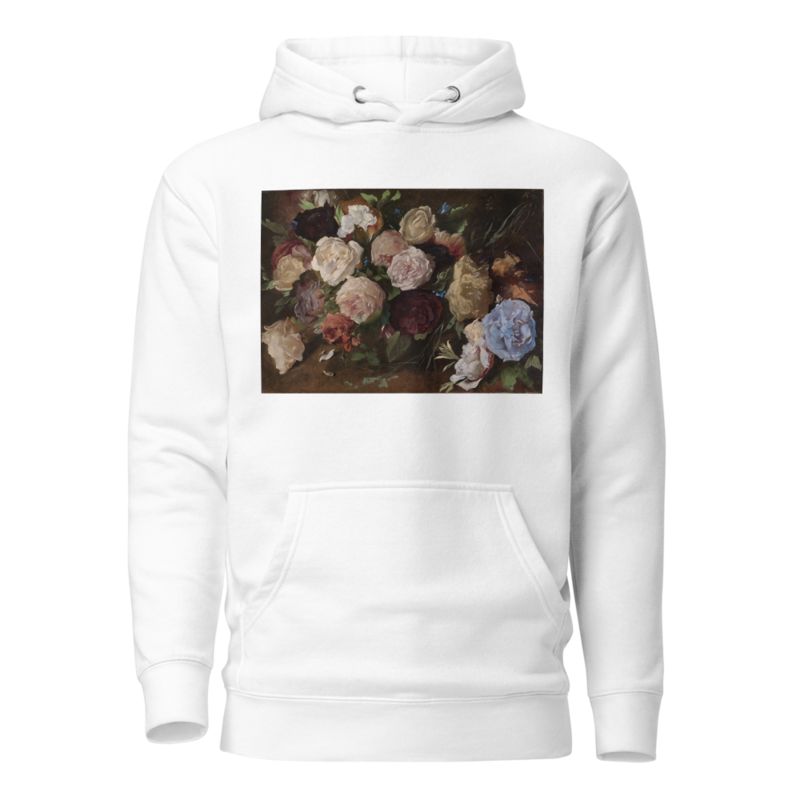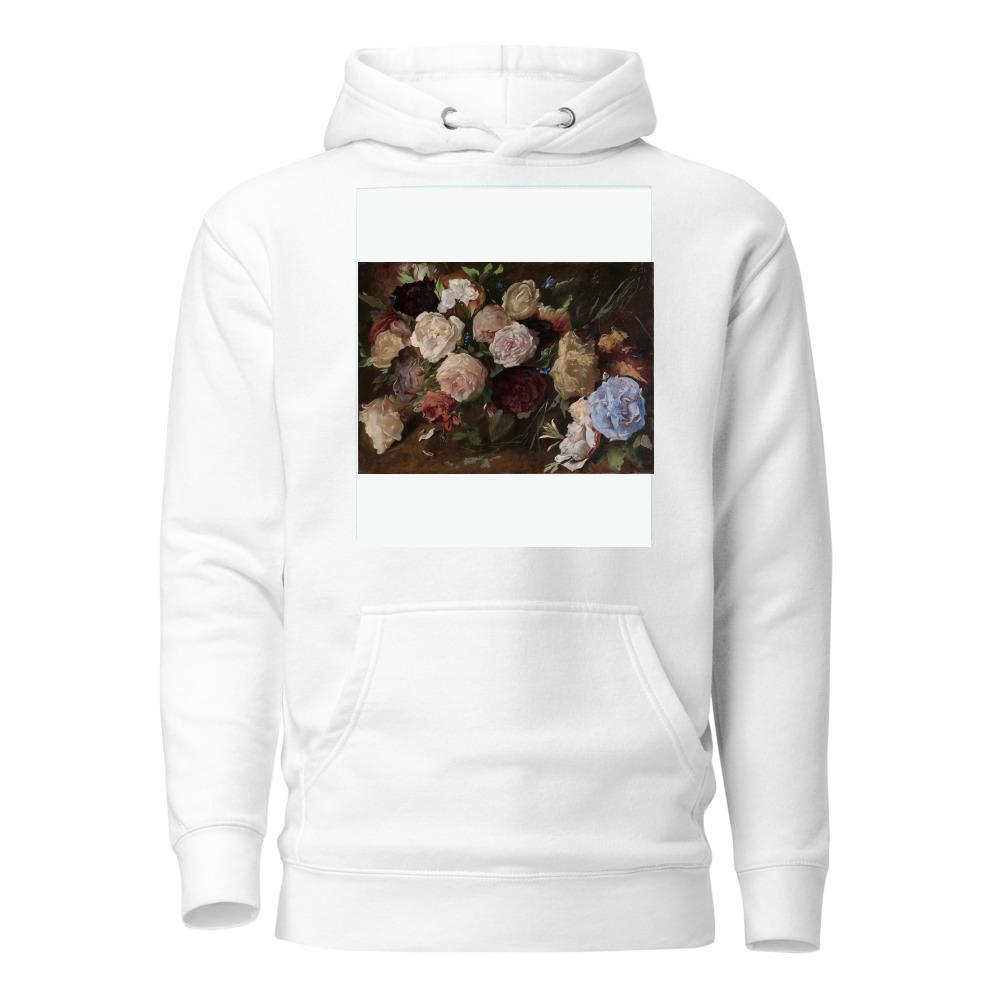Description
Blumenstudie by Anselm Feuerbach printed on a Hoodie
About the Hoodie
Modern fit
It provides a more tailored look than a regular fit
Comfortable
The fabric and fit of this item are extra comfy
Tear-away tag
Easily removable tear-away tag that allows you to add a custom inside label
Premium quality
The product is made from premium, high-quality materials
Classic unisex hoodie with a front pouch pocket and matching flat drawstrings. The 100% cotton exterior makes this hoodie soft to the touch.
- 65% ring-spun cotton, 35% polyester
- Charcoal Heather is 60% ring-spun cotton, 40% polyester
- Carbon Grey is 55% ring-spun cotton, 45% polyester
- 100% cotton face
- Fabric weight: 8.5 oz./yd.² (288.2 g/m²)
- Front pouch pocket
- Self-fabric patch on the back
- Matching flat drawstrings
- 3-panel hood
- Tear-away tag
Anselm Feuerbach (1829-1880)
Anselm Feuerbach was a German painter. He was the leading classicist painter of the German 19th-century school.
Feuerbach was born at Speyer, the son of the archaeologist Joseph Anselm Feuerbach and the grandson of the legal scholar Paul Johann Anselm Ritter von Feuerbach. The house of his birth is now a small museum.
Between 1845 and 1848 he attended the Düsseldorf Academy, where he was taught by Johann Wilhelm Schirmer, Wilhelm von Schadow, and Carl Sohn. He went on to the Munich Academy, but in 1850, along with a number of other dissatisfied students, he moved to the academy at Antwerp, where he studied under Gustav Wappers. Feuerbach moved to Paris in 1851, where he was a pupil of Thomas Couture until 1854. It was in Paris that he produced his first masterpiece, Hafiz at the Fountain (1852).
In 1854, funded by Grand Duke Friedrich of Baden he visited Venice, where he fell under the spell of the greatest school of colourists, several of his works demonstrating a close study of the Italian masters. From there he continued to Florence and then to Rome. He remained in Rome until 1873, making brief visits back to Germany. In 1861 he met Anna Risi (known as “Nanna”), who sat as his model for the next four years. In 1866 she was succeeded as his principal model by Lucia Brunacci, an innkeeper’s wife who posed for his pictures of Medea. In 1862 Feuerbach met Count Adolf Friedrich von Schack, who commissioned copies of Italian old masters from him. The count introduced him to Arnold Böcklin and Hans von Marées. The three artists became known as the Deutschrömer (“German Romans”) because of their preference for Italian over German art.
Between 1869 and 1874 he painted two versions of Plato’s Symposium.
In 1873 Feuerbach moved to Vienna, having been appointed professor of history painting at the Academy. Among his students Ludwig Deutsch, Rudolf Ernst and Jean Discart. later, Feuerbach developed a disagreement with architect Theophil Hansen over his ceiling mural The Fall of the Titans, painted for the Great Hall of the new Academy building on the Ringstrasse. While in Vienna he came to know Johannes Brahms. Brahms later dedicated a composition to Feuerbach, Nänie.






Reviews
There are no reviews yet.